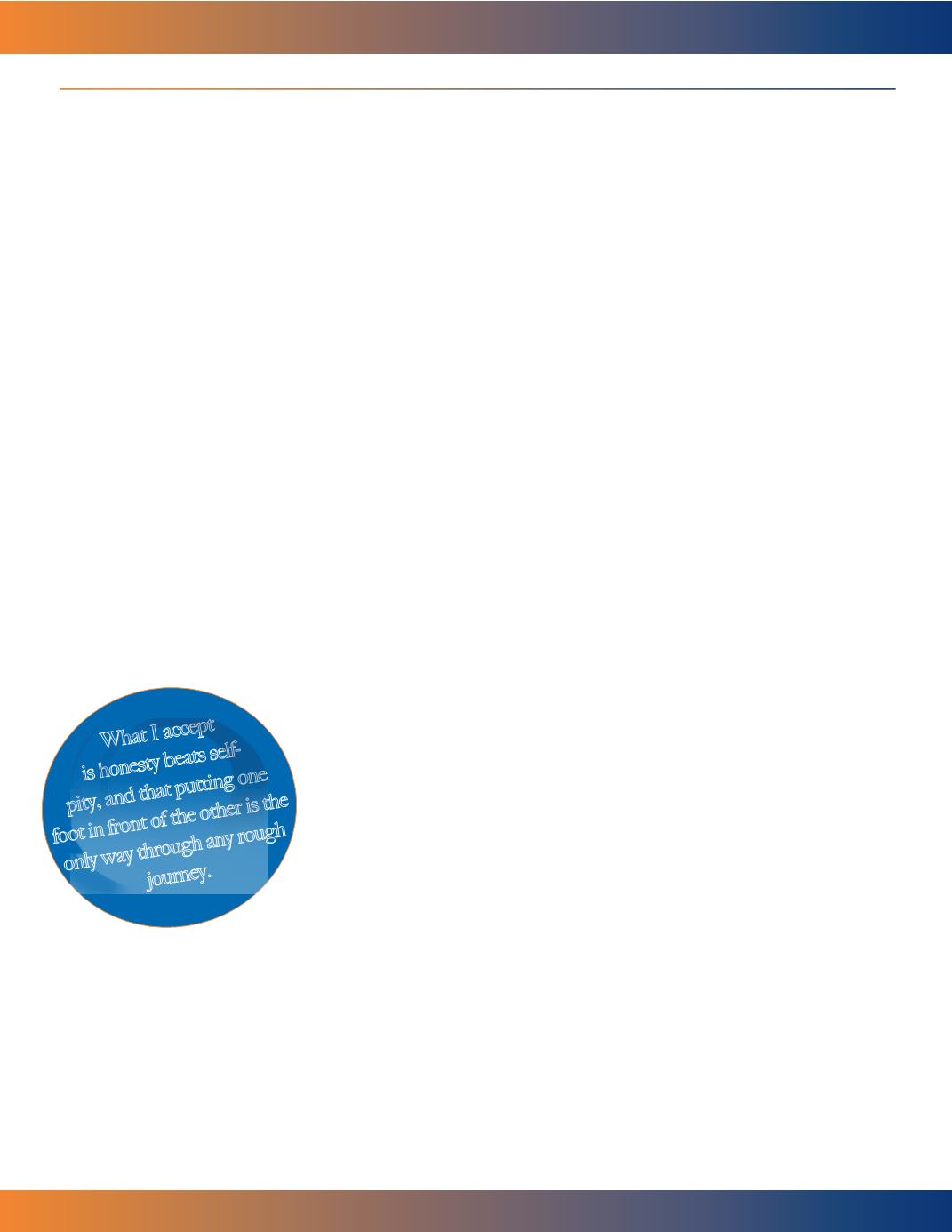
Cutaneous Lymphoma Foundation
8
My Personal Journey With Cutaneous Lymphoma
Andrew Lotz
Pittsburg, PA
I’ve learned as much about my inner strengths as I have about
my medical condition since being diagnosed with cutaneous
T-cell lymphoma (CTCL) in 2009. I now know about bouncing
back from physical and emotional challenges, about the value
of support from family and students, and about how sharing
experiences helps other patients.
A big lesson is that there’s nothing remarkable about any of
this. I’m not better-equipped than anyone else. We all adapt to
situations that arise.
Before my progress came a year and a half of searching for a
diagnosis. A puffy rash first appeared on one side of my face in
2008. A dermatologist tried three medications for several months
each before she sent a biopsy for analysis.
It took four days to get the results, which came via cell phone late
on a Friday afternoon in September 2009, right before my 31st
birthday. That was the first time I heard about a type of cancer
called CTCL. I was alarmed, naturally. No family member had
cancer or a skin condition, and all I knew about was Hodgkin’s
lymphoma and non-Hodgkins.
Reality Check from Foundation
Finding the Cutaneous Lymphoma Foundation through a web
search provided a reality check about critical differences between
CTCL and riskier forms.
Further understanding
and reassurance came as
treatment began at the
University of Pittsburgh
Medical Center,
known as UPMC,
conveniently located
a few blocks from
my political science
department on the
same campus. I kept
teaching and walked to the
dermatology office of Dr.
Larisa Geskin and Dr. Lisa
Grandinetti, who still provide my care.
I have a rare variant – folliculotropic CTCL – that doesn’t fit
the usual profile. Cancerous cells congregate in hair follicles,
which means it’s deeper than a skin condition and requires
combined therapies for an aggressive approach. And at age 33,
I’m far younger than most patients – as was clear when I joined
a support group at the hospital and again later at two Patient
Educational Forums hosted by the foundation.
Dr. Geskin, whom I still see monthly, started me on oral
Targretin in fall 2009. At 6-feet, 6 inches, I’m a big guy, so I took
up to eight pills daily. New patches still developed, including on
my face, left hand and legs.
Radiation and Chemo
The next step, site radiation, used lead plates with customized
cutouts to expose only the patches. That reduced the swelling,
which hasn’t come back. Patches remain, though facial ones are
the least visible.
After trying Zolinza pills for a month, I participated in a
research study of Ontak – an intravenous chemotherapy drug
administered in about 15 minutes three times every third week.
There was no hair loss, but fatigue was a side effect.
I continued teaching, but often had to sit and cancelled a
couple of classes. Students were understanding and became
an important part of my support network through their caring
and encouragement. I’m typically vigorous in the classroom and
thrived on bursts of energy, but would collapse into my chair at
the end of a lively hour. During 2010, I taught just one spring
course and another that summer.
Ontak didn’t halt the spread of patches, so I was switched to
Istodax – an IV drug administered over four hours once a week.
The regimen lasted three weeks at a time, followed by a week off,
and lasted from August 2010 through that fall.
Vigorous Regimen
That was a tough drill, leaving me drained for three days after
each session – scheduled on Thursdays to allow weekend rest.
Istodax hammers white blood cells and platelets, causing fatigue,
paleness and vulnerability to easy bruising – even from keys in a
pocket.
Later that year, Istodax drips were supplemented by Interferon
shots a day later. I had to wear a surgical mask when in groups
because of increased infection risk.
Those harsh medications generally are Stage IV treatments,
though I’m not necessarily that advanced. My status required an
internal attack because it’s deeper than other CTCL forms.
The chemo period in 2010 was the roughest it got. I slept a lot,
was embarrassed by the face mask and felt depressed.
At my sister’s insistence, I began speaking with a Pittsburgh
psychologist, Dr. Linda Ewing, who specialized in the impact
of cancer on young patients. Alternate-week discussions were
helpful, and I now go every three weeks. I’m thankful my sister
pushed that.
Better Quality of Life
I went off Istodax and Interferon in April 2011, which let me
resume jogging, keep a fuller professional schedule and live a
more balanced life. Ultraviolet A light therapy with Psoralen
What I accept
is honesty beats self-
pity, and that putting one
foot in front of the other is the
only way through any rough
journey.
“Andrew Lotz: My Personal Journey” – Continued on Page
15


